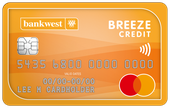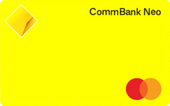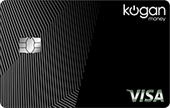If you've only just heard about credit cards with 0% interest on purchases, you might be wondering what sets them apart from other credit cards.
What is a 0% purchase credit card?
A 0% purchase credit card has an introductory or promotional interest rate of 0% on purchases for a specified period, which can vary between six and 15 months (or longer), offered to new cardholders only.
This introductory offer is quite different from a credit card’s standard interest-free days (usually either up to 44 or up to 55 days) granted in each billing cycle for cardholders who do not have a carried-over balance from the previous month. The introductory offer, while it lasts, effectively replaces the standard interest-free days by making them unnecessary.
How do 0% purchase credit cards work?
Credit cards with an introductory interest-free period are quite simple products. Here's how they work.
- Only the minimum repayment is necessary. During the 0% purchase introductory offer period, cardholders are still required to make the minimum monthly repayment (e.g. 2% of the balance owing), but can otherwise allow their purchases balance to grow (restricted only by the card’s credit limit) without incurring any interest charges.
- Revert interest rate kicks in at the end of the offer period. Once the introductory offer period expires, the full balance accumulated from purchases made during the period will need to be repaid at once, in order to avoid paying the revert interest rate on the balance. The revert interest rate is usually the card’s ongoing interest rate applied to purchases balances carried over from the previous month.
How to compare 0% purchase credit cards
There are several key features you need to examine when comparing and selecting a card. It is also important to look at your own finances and the way you manage your money to find the credit card that is best suited to you.
- Introductory purchase interest rate. This is usually 0% and, like other introductory offers, is usually only available to new customers.
- Introductory offer period. This is an essential consideration when comparing any credit card. The longer the period, the easier it will be to repay the debt interest free.
- Revert rate. Check what interest rate will apply to any balance remaining once the introductory offer ends. When the promotion comes to an end the purchase rate reverts to a higher standard purchase rate. While the best plan is to clear the balance within the promotional period, it is possible you will still have a debt on your credit card when the offer expires. You may want to continue to use your card as a standard credit card after the promotion ends, so it is important to know how the deal changes and what interest rates apply.
- Annual fee. 0% purchase cards and no annual fee are quite well correlated, at least for the first year. Check whether there are any cards with an offer for 0% on purchases and no annual fee, because there often is.
- Other features and benefits. Gold and platinum level credit cards with a 0% purchase rate offer often come with other benefits such as rewards programs, concierge services and insurance. If you plan to use a credit card for a large purchase, a household item or a holiday for example, extra travel or purchase protection could be very helpful.
- Your budget. The best way to use a credit card with a promotional interest rate is to use it to make purchases and repay the amount before the introductory offer ends, so it is important to look at your finances and calculate how much you can realistically afford to repay. This will give you an idea of how much you can afford to spend on credit card purchases and how much you need to put aside each month to clear the balance.
- The terms and conditions. Before applying, carefully study the small print of the terms and conditions for any extra charges, how the deal changes when the introductory period ends, and any clauses and penalties that could cancel the offer.
Other types of interest-free credit cards
Australians have a range of interest-free credit cards available. Apart from standard cards and those with interest-free purchases, there are interest-free balance transfers and cards with no interest at all.
0% purchases vs no interest
The main difference between 0% purchase credit cards and no interest credit cards is how interest is charged. Since 0% purchase credit cards are introductory offers, the interest on purchases will revert to the standard rate once the introductory period has passed. No interest credit cards do not charge interest at all. Instead, they charge a monthly fee.
0% purchases vs 0% balance transfers
It's important to note that there is a distinct difference between a credit card offering 0% on purchases and one with 0% on balance transfers. They are two completely separate introductory offers. You can use a credit card with 0% on purchases to spread costs over time whereas a balance transfer card is typically used to consolidate debt to a low rate. Occasionally there are cards with both.
0% purchases vs standard credit cards
The main difference between 0% purchase credit card and standard credit cards is the introductory offer on purchases. Most credit cards will charge interest on whatever balance is carried over from one statement period to the next. However, with a 0% purchase credit card, there is an introductory interest-free period meaning you can use the card to buy something and pay no interest on it even if there is a balance carried over.








